Time Travel Shows 101: The Rules Behind ‘Timeless,’ ‘Outlander,’ ‘Doctor Who,’ and More
Is this a blast from the past, or are we going back to the future?
Time traveling is all the rage these days on television, with at least seven shows currently available to watch or stream, including new series Making History and Time After Time. The time travelers include adventurers looking to have a little fun, operatives hoping to save humanity, and superheroes battling the forces of evil.
Not sure which one’s your speed? Play our “plan your TV time travel adventure” game to see which show you should check out.
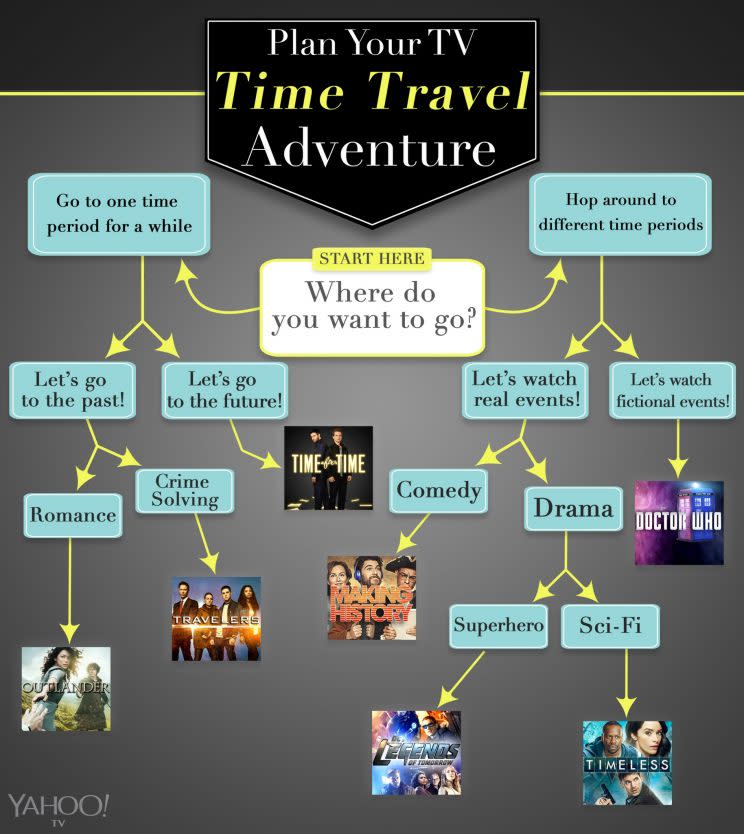
All time travel shows have their own rules, and it can be hard to keep track of who goes when, how it works, and what can take place in the past/future.
Here’s a quick guide to the time travel rules on seven series:
Outlander (Starz)
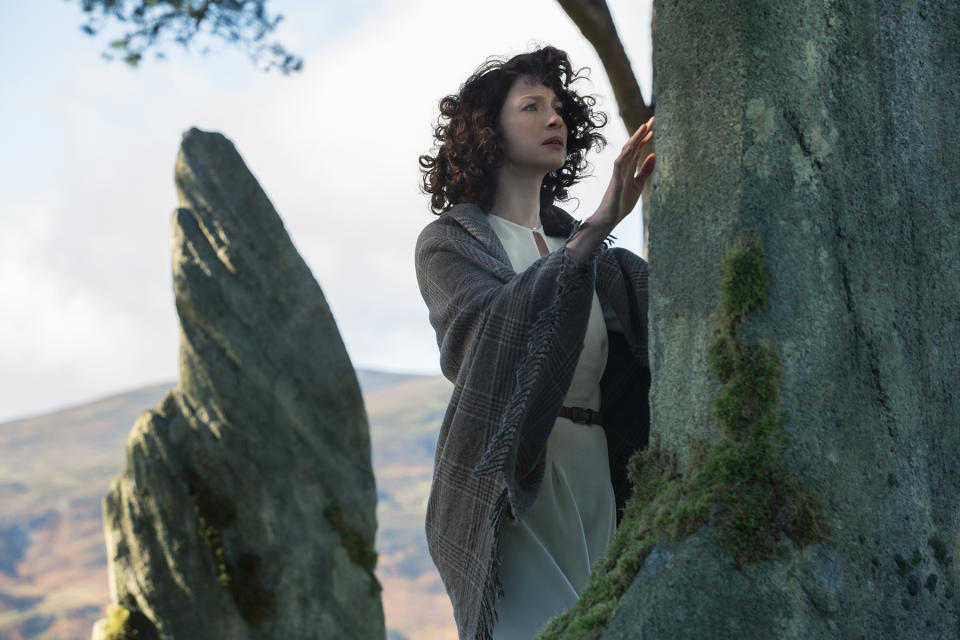
Who and when? Claire Randall (Caitriona Balfe), a nurse from 1946, is transported via the Craigh na Dun standing stones to 1743 Scotland. She later learns another woman, Geillis Duncan, had time traveled, as well.
Related: Watch the Stars of ‘Outlander’ Bid Farewell to Scotland
How does it work? Magic! Seriously, the show relies on a sense of mysticism around the stones, where druids once held rituals. Neither era that Claire lives in brings up science.
The rules: Claire attempts to change a major event, the Battle of Culloden, which sees the slaughter of thousands of Scots, but she fails. In addition, the time traveling in Outlander appears to be a loop — if Claire had not been in the 18th century and intervened in the life of Mary Hawkins, her 20th century husband, Frank, would never have been born.
Travelers (Netflix)
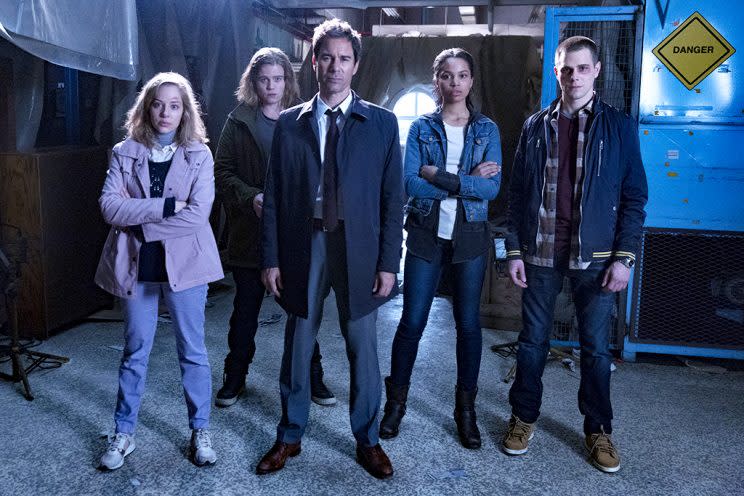
Who and when? Hundreds of years in the bleak future, a team of operatives project their consciousness into the bodies of 21st century hosts. Their mission is to stop critical events (like an antimatter explosion) to improve humanity’s chances for survival.
How does it work? Science and technology is clearly light years ahead of ours in this distant future, but we don’t see that future.
The rules: The operatives download into hosts who are about to die. They then assume their identities and act like their hosts — going to their jobs, spending time with their families, etc. The team is capable of changing past events, but sometimes, those changes trigger other, negative repercussions.
Time After Time (ABC)
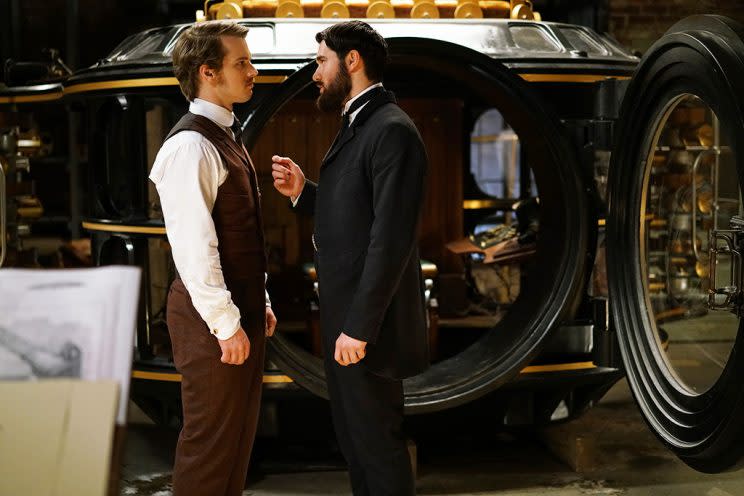
Who and when? H.G. Wells (Freddie Stroma) discovers his best friend is Jack the Ripper (Josh Bowman), who then steals his time machine to travel to 2017, where he continues his killing spree. Wells pursues him through time to prevent the deaths.
How does it work? The workings of the time machine aren’t spelled out in detail, but the traveler can input a date. “It will automatically return, unless you have the key, which means you are in control and it will stay in the time that you are currently in,” star Freddie Stroma told Yahoo TV.
Related: ‘Time After Time’ Star Freddie Stroma Previews His Time Traveling Pursuit of Jack the Ripper
The rules: The machine can go into the past and future, and travelers can alter events. But Stroma said, “We can’t go back too closely to the same point of time where we traveled too often. As [Wells] describes it, it pricks a hole in the fabric of time. If you do it too many times, you risk tearing a hole in time, and God knows what would happen — possibly the end of existence.”
Making History (Fox)
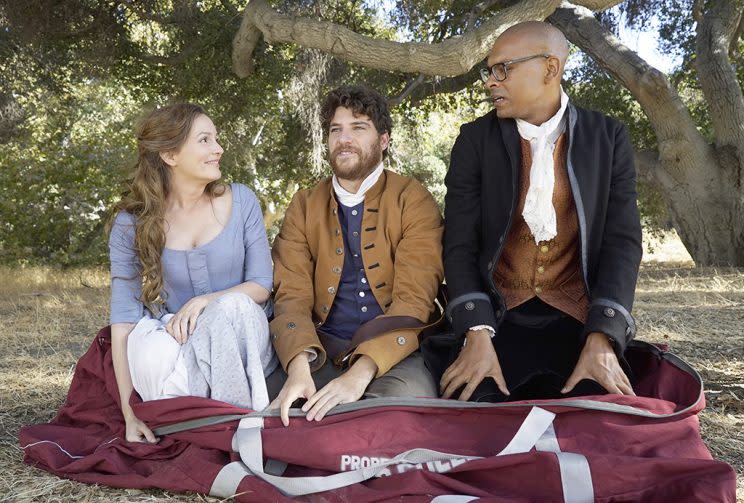
Who and when? Computer science professor Dan (Adam Pally) journeys to the Colonial era to woo Deborah Revere (Leighton Meester). After he messes up the American Revolution, he calls in a history professor friend (Yassir Lester) to help.
Related: ‘Making History’ Stars Reveal Their Most Desired Time Traveling Destinations
How does it work? Dan gets into an oversized duffel bag and punches numbers into a machine, and voila! The science behind it is not explained.
The rules: As this is a comedy, rules aren’t particularly important. Dan can change history (like preventing the Revolution from starting), and then change it back. Other alterations, like introducing modern songs and references before their time, don’t seem to have any effect.
Timeless (NBC)

Who and when? History professor Lucy (Abigail Spencer), soldier Wyatt (Matt Lanter), and programmer Rufus (Malcolm Barrett) team up to pursue Garcia Flynn (Goran Visnjic), who steals a time machine with the intent of changing major events in history.
How does it work? In the show, Mason Industries had already created a prototype (which the team uses) and was working on the final version (which Flynn steals). Co-creator Eric Kripke noted they had vetted their ideas with a physicist. “There’s a thing called a closed time curve, that we’re basing a lot of our science on,” he explained. “If you theoretically have enough gravitational pull, you can actually bend the fabric of space and time.”
Related: ‘Timeless’ Fashion Trip: Costume Designer Mari-An Ceo on the Show’s Time-Traveling Looks
The rules: As co-creator Shawn Ryan told Yahoo TV when the show premiered, “Our big one is that you can’t go back to any time period where you existed — either existed in your normal life, or for instance our characters go back to the day the Hindenburg exploded. That’s a day they couldn’t go back to again.” History can be changed, which we see when the team returns to the present day — the Hindenburg disaster played out differently. And characters can be changed, as well — as we see when Lucy’s sister no longer exists.
Legends of Tomorrow (The CW)

Who and when? A team of misfit superheroes travel to different periods — the Wild West, the Cold War, 1920s Chicago — to fix aberrations in history.
How does it work? They’re superheroes (and villains) with special powers. And they’ve got the Waverider, a time traveling ship.
The rules: Like in Timeless, the Legends can’t go back to the same moment in time, nor any moment they’re involved in. For instance, if one of them was to be killed, they can’t go back to warn themselves.
Doctor Who (BBC America)

Who and when? The alien Time Lord who goes by the name “The Doctor” travels, usually with a companion, through time and space to engage in (mostly) fictional events in (many) fictional places.
How does it work? The now seeming-extinct ancient race of extraterrestrials had a non-linear sense of time and developed time traveling technology, known as the TARDIS (Time and Relative Dimension in Space).
Related: ‘Doctor Who’: Why It’s So Hard to Cast the 13th Doctor, Plus Who Wants to See Inside the TARDIS Next
The rules: There are no redos in Doctor Who — a Time Lord cannot go back and undo his actions. Crossing your own timeline causes major temporal problems. Additionally, there are fixed points in time that cannot be altered. However, the rules of Doctor Who tend to be more like guidelines and can be bent or even broken.
Read More:
Review: ‘FEUD: Bette and Joan’ Cleverly Tackles Sexism and Ageism
‘Planet Earth II’ Producers Preview ‘Jungles’

